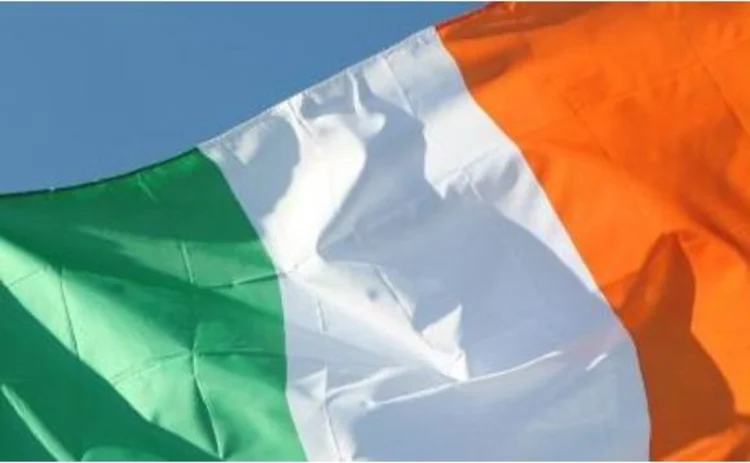
Irish government adopts bad bank model

Plans for Europe’s first system-wide ‘bad bank’ of the credit crisis have gained assent from the Irish parliament.
On November 12, the Irish parliament approved a law allowing the National Asset Management Agency to purchase distressed loans from three Irish banks and two Irish building societies. These are Allied Irish Bank, Anglo Irish Bank, Bank of Ireland, the Educational Building Society and Irish Nationwide.
President Mary McAleese signed the legislation on November 22, subject to final approval from the EU.
The Republic of Ireland will be the first European state to establish a US-style Resolution Trust Corporation ‘bad bank’ in an attempt to remove troubled assets from bank balance sheets that were decimated during the credit crisis.
To fund the scheme, the new agency will issue government securities and agency-guaranteed securities to the banks in exchange for the assets. In a draft bill, the agency said it would use all “powers necessary to purchase, hold, and dispose of assets and if necessary complete developments with a view to achieving an optimum return to the State”.
Conor Downey, a Paul Hastings partner specialising in restructuring real estate, describes the Irish government’s move as “brave”. He says: “It’s the first real effort we have seen in Europe to restart commercial activity among its banks, to do something other than shoring up the creditworthiness and creating liquidity for its banks. By taking bad loans away from the banks, it restores third-party confidence in their creditworthiness, and also restores confidence in their actual capital value.”
The assets to be purchased will consist of distressed property loans. The agency says 36% of the assets are land loans, 28% development property and 36% associated commercial loans.
Property crash
Downey attributes Irish banks’ acute problems to the collapse of the country’s “highly speculative” property boom, and the previous “vast amounts of bank lending to a handful of very close-knit developers in the building sector”. Property values in the republic have halved since their peak in 2007.
The agency will spend €54 billion on the loans, around 70% of the estimate book value of €77 billion. However, with an estimated current market value of €47 billion, Downey fears the agency will struggle to find investors willing to pay the purchase price for Irish-domiciled assets, which make up around two-thirds of the total.
“There will be major pressure to sell for at least that price. The National Asset Management Agency is charged with trying to get the best value it can, because it has used taxpayer money to fund the acquisition. I think there will be investor demand, but the question is: will there be investor demand at that price? And will the agency be able to put up the structures that will attract investors looking at that price?” he says.
The agency will find it easier to sell the non-Irish loans, says Downey. “There will definitely be international demand for those non-Irish assets. The Irish assets are the more problematic ones.” Of the loans originated outside Ireland, around 20% are in Great Britain, 6% in Northern Ireland, with most of the rest in Europe or the USA.
The Irish government was the first in Europe to have a government guarantee for its financial institutions. Since September 28, 2008, the National Treasury Management Agency has guaranteed all the liabilities of its six largest banks and building societies. Total liabilities covered under the scheme, which is set to expire in September 2010, amount to approximately €485 billion.
Three other European countries – Germany, the Netherlands and Switzerland – have created ‘bad banks’ to deal with individual banks’ problems during the crisis, as an alternative to the asset protection schemes used in the UK and the US.
At the onset of the crisis in July 2007, the German authorities were forced to rescue IKB Deutsche Industriebank by redeeming liquidity lines worth €8.1 billion the bank had committed to on Rhineland Funding, an asset-backed commercial paper conduit. In April 2008, $23 billion of structured credit assets held by Westdeutsche Landesbank were taken off-balance sheet and transferred to a special-purpose vehicle.
The German government is also providing other banks with the option of transferring distressed debt to the Special Fund Financial Market Stabilisation, Germany’s bank rescue fund, which was launched in May this year.
In January 2009, the central bank of the Netherlands transacted an 80:20 cashflow swap with ING to reduce the risk on its $39 billion portfolio of US Alt-A mortgage-backed securities.
In addition, Switzerland has established a special-purpose vehicle, the StabFund, to which UBS has transferred $39 billion of US and European asset-backed securities and super-senior CDO tranches. The transfers were completed in April this year.
Only users who have a paid subscription or are part of a corporate subscription are able to print or copy content.
To access these options, along with all other subscription benefits, please contact info@risk.net or view our subscription options here: http://subscriptions.risk.net/subscribe
You are currently unable to print this content. Please contact info@risk.net to find out more.
You are currently unable to copy this content. Please contact info@risk.net to find out more.
Copyright Infopro Digital Limited. All rights reserved.
You may share this content using our article tools. Printing this content is for the sole use of the Authorised User (named subscriber), as outlined in our terms and conditions - https://www.infopro-insight.com/terms-conditions/insight-subscriptions/
If you would like to purchase additional rights please email info@risk.net
Copyright Infopro Digital Limited. All rights reserved.
You may share this content using our article tools. Copying this content is for the sole use of the Authorised User (named subscriber), as outlined in our terms and conditions - https://www.infopro-insight.com/terms-conditions/insight-subscriptions/
If you would like to purchase additional rights please email info@risk.net
More on Regulation
Prop shops recoil from EU’s ‘ill-fitting’ capital regime
Large proprietary trading firms complain they are subject to hand-me-down rules originally designed for banks
Revealed: the three EU banks applying for IMA approval
BNP Paribas, Deutsche Bank and Intesa Sanpaolo ask ECB to use internal models for FRTB
FCA presses UK non-banks to put their affairs in order
Greater scrutiny of wind-down plans by regulator could alter capital and liquidity requirements
Industry calls for major rethink of Basel III rules
Isda AGM: Divergence on implementation suggests rules could be flawed, bankers say
Saudi Arabia poised to become clean netting jurisdiction
Isda AGM: Netting regulation awaiting final approvals from regulators
Japanese megabanks shun internal models as FRTB bites
Isda AGM: All in-scope banks opt for standardised approach to market risk; Nomura eyes IMA in 2025
CFTC chair backs easing of G-Sib surcharge in Basel endgame
Isda AGM: Fed’s proposed surcharge changes could hike client clearing cost by 80%
UK investment firms feeling the heat on prudential rules
Signs firms are falling behind FCA’s expectations on wind-down and liquidity risk management







